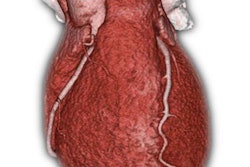Osteoporosis provides an optimal clinical scenario for which deep-learning artificial intelligence can be applied to help radiologists and patients, noted presenter Dr. Michael Park of the Catholic University of Korea in Seoul.
"We looked for a radiology problem that is treatable, common, often missed by radiologists, easy to analyze using deep learning, has a clear 'answer,' and has a large amount of cases available," Park told AuntMinnie.com. "Although there are many previous studies regarding the use of CT to predict osteoporosis in patients, most radiologists do not mention or try to diagnose osteoporosis on CT exams in routine practice."
Even though 50% of women and 20% of men may develop an osteoporosis-related fracture, osteoporosis screening with dual-energy x-ray absorptiometry (DEXA) remains underutilized. However, many patients receive CT scans for various reasons, offering an excellent opportunity to also benefit from osteoporosis screening; deep learning can accurately screen these patients and provide automated analysis, according to Park.
After training and testing a convolutional neural network (VunoNet) on more than 4,000 pairs of abdominal CT and lumbar DEXA scans, the researchers found that bone mineral density (BMD) values estimated by the deep-learning software from the CT scans had a very high correlation with BMD values generated on the DEXA exams. It also yielded high sensitivity and specificity.
"Furthermore, we are working to fully automate the analysis so that the screening result is provided completely automatically after CT exams are acquired, with the osteoporosis screening result directly available in PACS viewers," Park said. This way "it can be truly practically integrated into a busy radiologist's workflow."
Check out this poster presentation at McCormick Place to learn more.



















